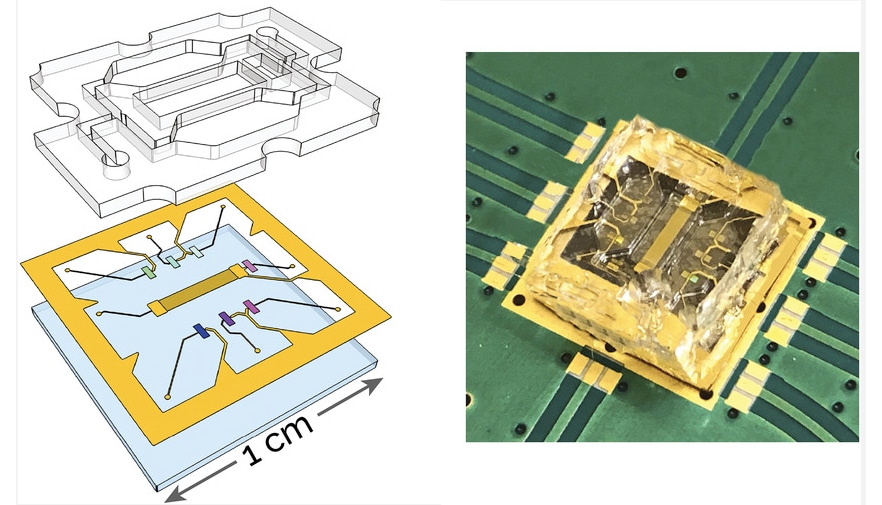
An innovative, portable and fast solution to detect the measles virus in human saliva has been developed by a group of researchers from the National Research Council’s Institute of Nanoscience (CNR-NANO), in collaboration with ARCHA and with the contribution of the University of Pisa, Scuola Normale Superiore and INTA.
The device is a coin-sized, highly sensitive biosensor, capable of detecting the virus in saliva samples. The study was published in the journal Advanced Functional Materials.
The solution, which uses an innovative technology based on surface acoustic waves, is suitable for use in early diagnostic tests and in emergency situations for the detection of measles, one of the most infectious airborne viruses ‒ similar to the SARS-CoV-2 Omicron variant ‒ responsible for 140,000 deaths a year worldwide.
“Surface acoustic waves are a kind of micro-earthquake that propagates along the sensor surface,” explained Marco Cecchini, researcher at CNR-NANO, who led the study. “When the virus attaches to the sensor, it slows down the speed of wave propagation, making it possible to detect the presence of the molecule. We used these mechanical waves both to mix the fluid sample and to detect the virus, and this dramatically improved the sensitivity of our sensors compared to other acoustic sensors already on the market.” The device has been tested for the measles virus, “but the technology can be adapted to other types of viruses, such as Sars-CoV-2, and to bacteria, proteins and nucleic acids,” added the scientist. “Our study demonstrates the validity of this technology, already covered by a patent owned by INTA, a spin-off from the CNR and Scuola Normale Superiore, which will have to be clinically validated,” Cecchini concluded.
The device can be developed to enable early point-of-care (near to the site of the patient) diagnostic applications. “While conventional tests require sample processing, dedicated laboratories and specialized personnel, this sensor requires no special processing and can be used in situations where conventional tests are not practical, such as in airports and stations and in emergency situations,” explained Mauro Pistello, full professor at the Department of Translational Research and New Technologies in Medicine and Surgery of the University of Pisa and director of the Virology Operating Unit at the University Hospital in Pisa. “Early diagnosis is in fact crucial to prevent the spread of highly contagious, airborne diseases such as measles, influenza and COVID-19.”
The study was carried out as part of the SENSOR project (ITA) aimed at developing innovative tools for assessing, managing and communicating the risk of chemical and microbiological contamination by combining different technologies.

